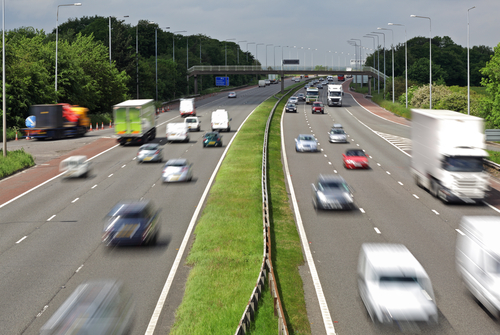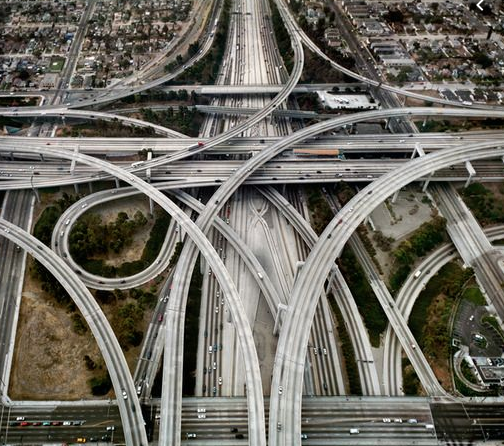The laws have changed since 2018; learner drivers can now drive on the motorway during their driving lessons.
To drive on the motorway with a provisional licence, you have to be:
- Accompanied by an approved driving instructor
- Driving a car with fitted dual controls with L plates
Motorway driving is not compulsory in regular driving lessons or practical driving tests. However, if new drivers want to refine their skills further, taking advanced driver training for new drivers can help.
Tips on driving on a motorway as a new driver with a full licence.
Although motorway driving is relatively straightforward when you follow the rules, it can help to have someone alongside you for support if you’re nervous. Asking someone to be with you for the first few times on a motorway can help your confidence.
Check your route before you travel. Forward planning is always vital to make your journey as simple as possible. Make note of the number of the junction where you plan to come off and the direction you need to go once off the motorway slip road.
Be confident and use your indicators and mirrors. Remember to check blind spots when you enter a motorway from the slip road on the left. Other drivers should be able to see you and let you in if needed; if you hesitate and slow down, it could confuse other road users, so keep up your speed, and you will join the lane seamlessly.
Watch your speed limit. The normal default speed limit is 70 mph on a motorway; but be aware of signs informing you of lower limits. Remember, just a slight increase above the speed limit can give you penalty points and a fine. If you are a new driver, you can only accrue 6 points in the first two years. More than this will result in a ban.
Keep checking your mirrors while on the motorway so you know what’s happening all around you. Remember to indicate when you want to change lanes. Again, when other motorists see your intentions, they should accommodate you. Exercise caution at all times; not everyone is courteous.

Prepare for your exit junction and make sure you are in the left-hand lane in good time before you reach the junction.
Motorway rules summary
a. Unless a motorway is an extension of an A road, you will join it from a slip road. Accelerate and make sure you are travelling at a speed to seamlessly merge with the traffic already on the carriageway.
b. The speed limit is always 70 mph, but there are occasions when signs alert you that a lower speed limit is in force ahead.
c. Never use the hard shoulder unless you have a breakdown or are directed to do so. It’s illegal to use it otherwise.
d. Signs on central reservations will apply to all lanes. Signs above the road on gantries will only apply to the lanes they are over.
e. Do not tailgate other drivers and leave even more room between you and other vehicles if it is wet, icy or foggy.
f. Get in the left-hand lane before you reach your exit junction in good time.
Motorway driving tips
Ultimately, skill comes from experience. The more you use the motorway, the better you will likely become. Here are some key tips to bear in mind.
It is vital to keep your distance from the vehicle in front. Remember to leave a 2-second gap between you and the vehicle in front, and pull back even further if you are behind an HGV; if they cannot see you in their mirrors, you could quickly get into trouble if they brake suddenly, not realising you are behind. Also, be careful when driving alongside them – they have substantial blind spots. Be aware of foreign lefthand drive HGVs when overtaking them to their right – their zones of vision will be different to UK righthand drive vehicles – they can’t see you as easily when you’re overtaking them. Many (but certainly not all) collisions involving HGVs pulling out to the right and hitting vehicles are often foreign lefthand drives.
Always plan ahead so you know your route. At the very least, you should understand which junction numbers you need when you join and when you exit the motorway.
Always do your due diligence – carry out basic vehicle safety checks before you start your journey. Check fuel, tyres and wipers, electric, oil, water and also yourself – are you fit to drive?
Breakdown on a motorway
If you should have issues with your car, move over to the hard shoulder, and always leave the vehicle and go to the verge, behind the barriers, for safety. Call your breakdown company and stay calm. Help will arrive soon. Never use your phone behind the wheel, which is illegal. Get out of the vehicle to make the call.
If you keep these simple rules at the foremost of your thoughts when driving on a motorway, you should avoid trouble.

